No matter how busy we get, there’s always time to enjoy beauty. It only takes a second or two.

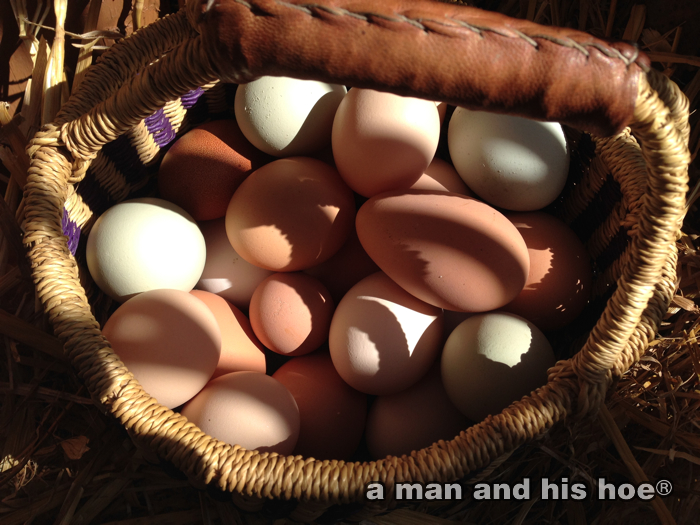

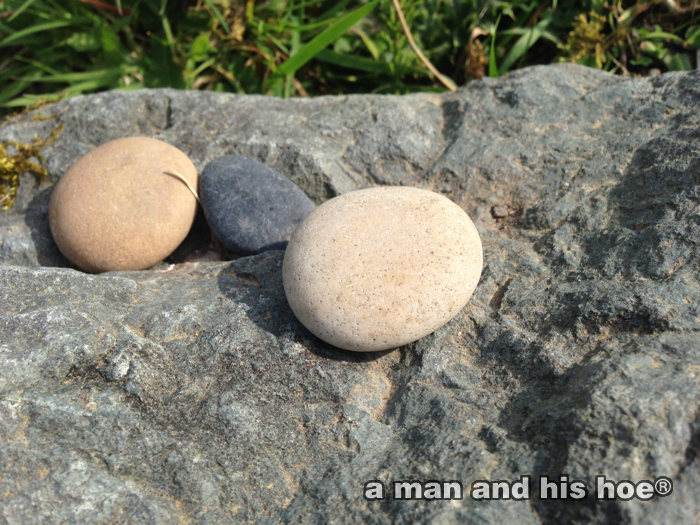
A Shovel Worth Having – and Made in Ohio to Boot
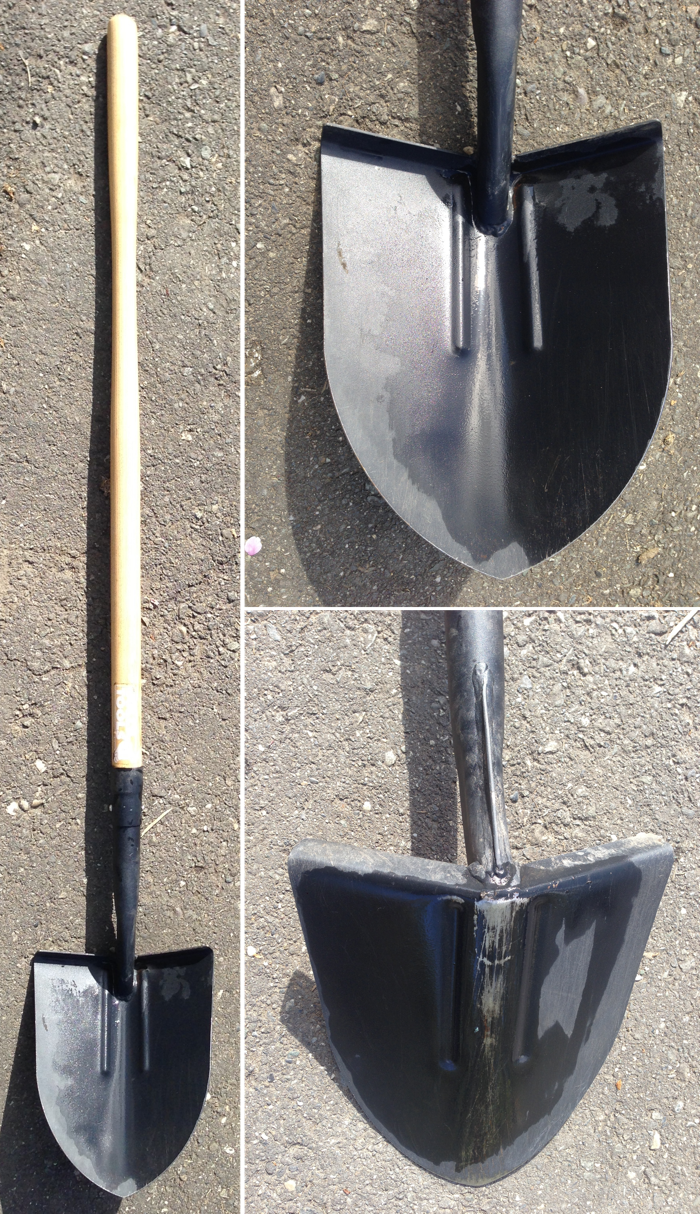
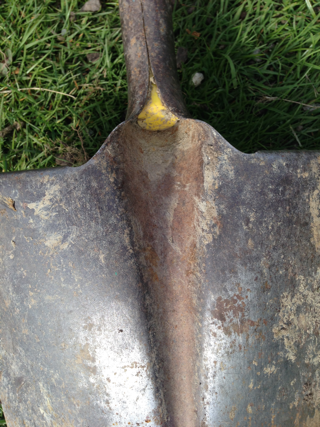
Good tools are indispensable when it comes to farming. And this is especially true with hand tools. A few weeks ago I found a sturdy shovel made by Bully Tools of Steubenville, Ohio, where they make all their tools. What impressed me about the shovel is that the back of the shovel head is sealed. Most shovel heads are not sealed in the back so when you use them, dirt gets clogged between the handle and the head. And if you’re dealing with any clay, they are a pain to clean.
Since the head of the Bully Tools shovel is sealed in the back, there is no place for dirt to clog, making cleaning a breeze. You can see in the photo of a regular shovel, how easy it is for dirt to build up on the back of the shovel head.
The head is made of 14 gauge steel which means it is strong. The handles are made of ash. This is a shovel that last for years. Keep workers in Ohio employed. Make your next shovel a Bully Tools shovel.
Transformation – or Where Did the Cherry Blossoms Go?
What is this? It’s what cherry blossoms become. All those beautiful blossoms which drifted down, covering the ground like fresh snow. Now they will slowly decompose into the garden and turn into other flowers and vegetables. They don’t look like much now, but what is amazing about them is that much of their matter came out of thin air. Plants have this incredible ability to eat the air. Through photosynthesis, they can trap the carbon molecules in the air, and turn that carbon into stems, leaves and flowers. Like magic, plants can take what is invisible and turn it into exquisite things of beauty, and eventually into rich matter that nourishes all of us. Some of this matter will even end up being chicken and eggs and vegetables, and eventually us. Then as we breathe, we exhale carbon dioxide and at some point, the plants will eat that carbon dioxide, extract the carbon, and the whole cycle continues round and round.
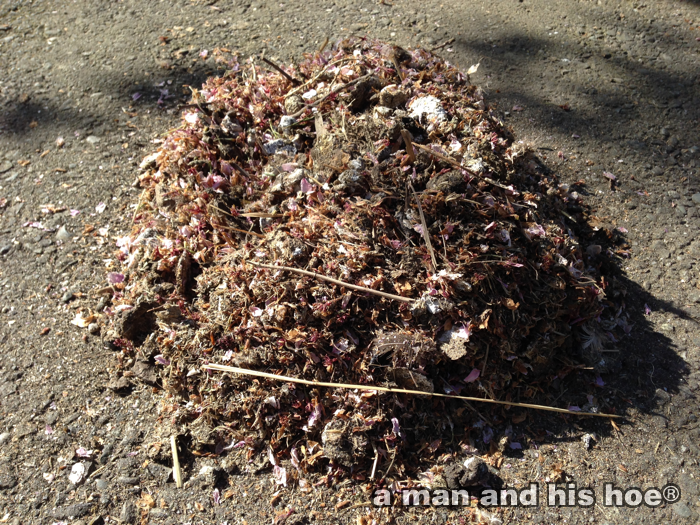

Tsuneko Sasamoto – Almost 100 and Still Going Strong
Yesterday I saw a reporter interview Tsuneko Sasamoto, a renowned Japanese photographer, who will turn 100 years old this September. In honor of her upcoming 100th birthday, there is an exhibit of her photographs at the Japan Newspaper Museum titled
100 Years of Japan’s First Female Photo Journalist Tsuneko Sasamoto. The exhibit runs through June 1, 2014.
As I watched the interview, it was hard to believe that the vivacious woman being interviewed had turned 99 more than half a year earlier. It made me wonder what I would be still doing at that age. Would I still be raising chickens and working the soil with a hoe? In the interview, she credited her long life to always have something more to do, to never giving up.
Below is a video of her made October 2013 when she was 99. Even though the interview is in Japanese, you get a good idea of how active she is. It is her voice narrating the video. She was just as vivacious in the interview I saw yesterday.
[youtube https://www.youtube.com/watch?v=8wXohfgZKVk?feature=player_detailpage&w=640&h=360]
About Tsuneko Sasamoto in Japanese and that page translated into English
New Pullet Egg and Cherry Blossom Snow
This time of year, every day is full of surprises. This morning I discovered a pullet egg. When hens first start laying eggs, they lay tiny eggs. You’ll rarely, if ever, find them in a store, but they are beautiful and make very cute fried eggs.

The flowers are still drifting off the cherry tree and blanketing the ground like snow. There are more petals than the chickens can possibly eat.
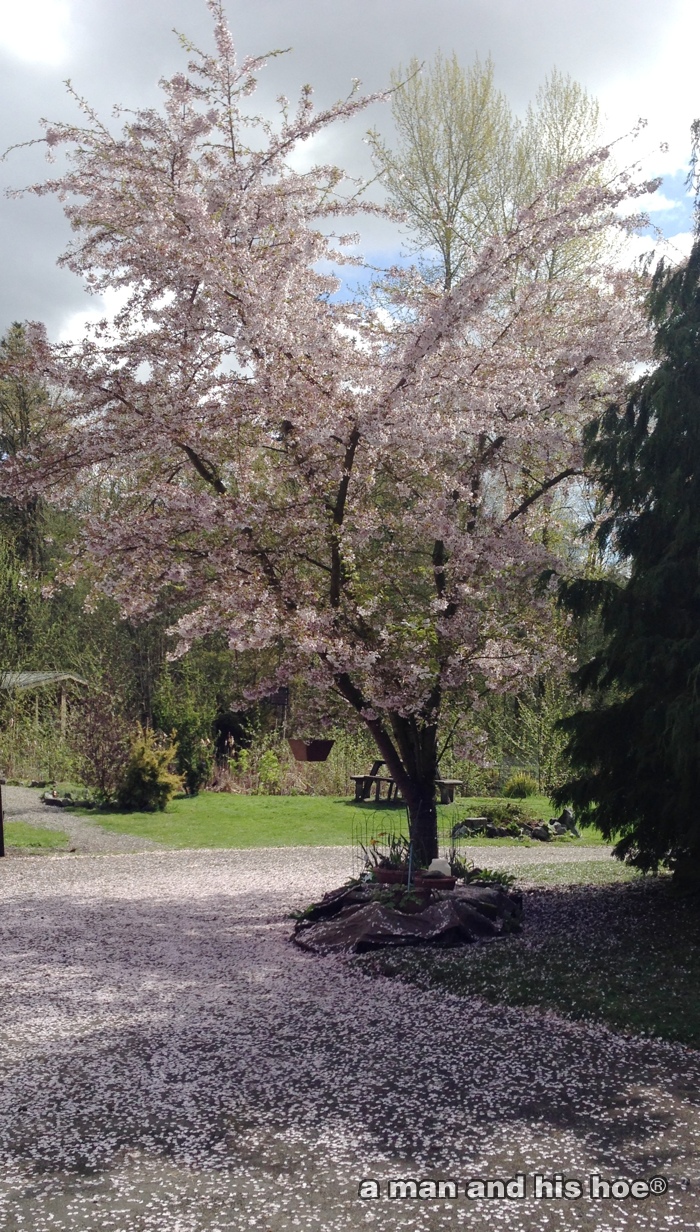
The mint is now growing vigorously.

And the salmon berries are in full bloom. Come late June and early July, the orange-salmon colored berries will be ready to eat. They are best eaten in the afternoon on sunny days, after the sun has warmed the berries to perfection.
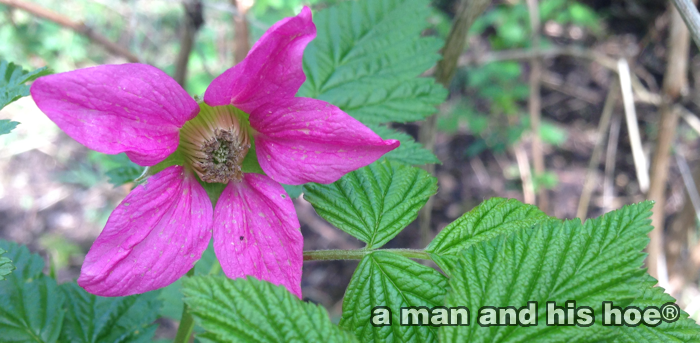
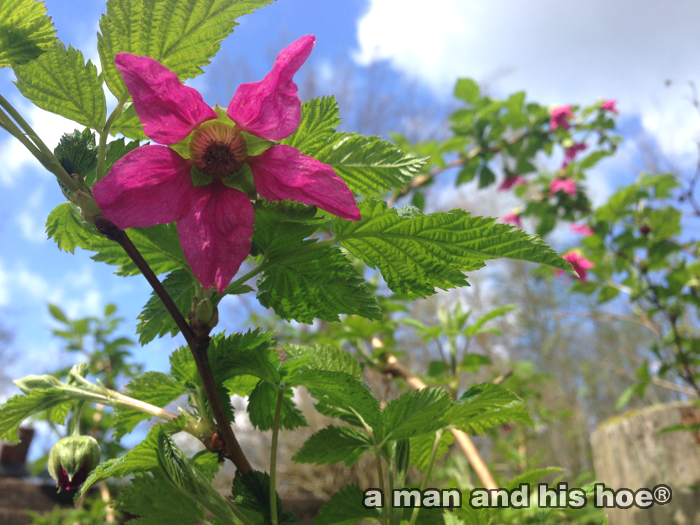

On a Wet April Day
On a day like today, it’s easy to imagine this place is high in a mountain valley. The clouds are rolling in off the ocean and hanging low. The air is misty, with big drops of cool water collecting on the leaves and flowers.
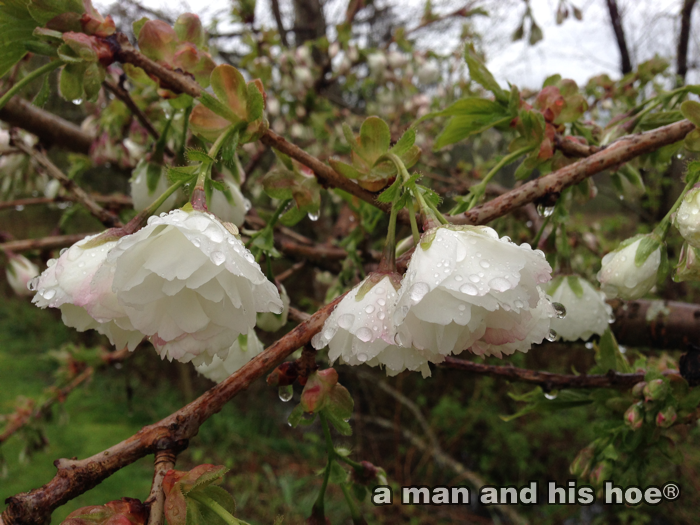

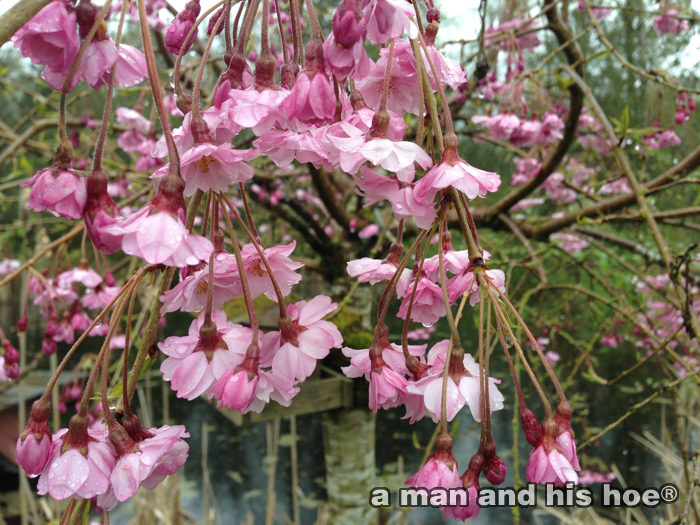
Young roosters often like to hang around older roosters. Lately, young Daisuke has been spending a lot of time near Billy. Roosters don’t start competing with each other until they get closer to being a year old. After their mother is done rearing them, if the roosters have brothers, they will stick together. And those that don’t have brothers, may seek out the company of an older rooster.
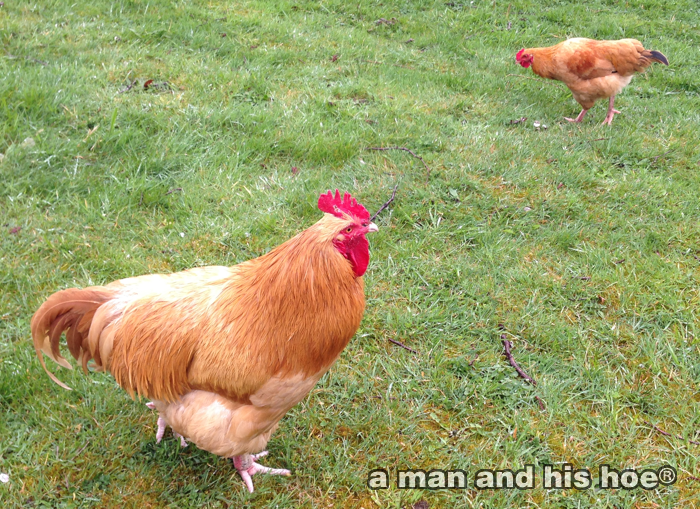

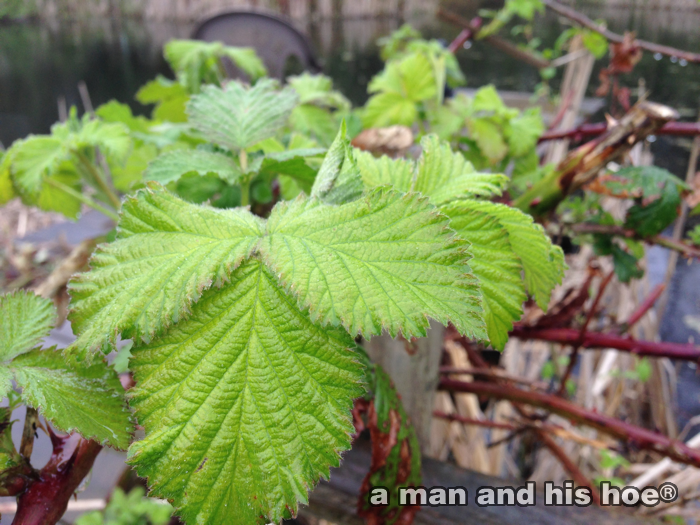
This is Cognac, a Wheaten Maran, one of my special hens. Marans lay some of the darkest eggs of all. You can see the dark egg she laid below.
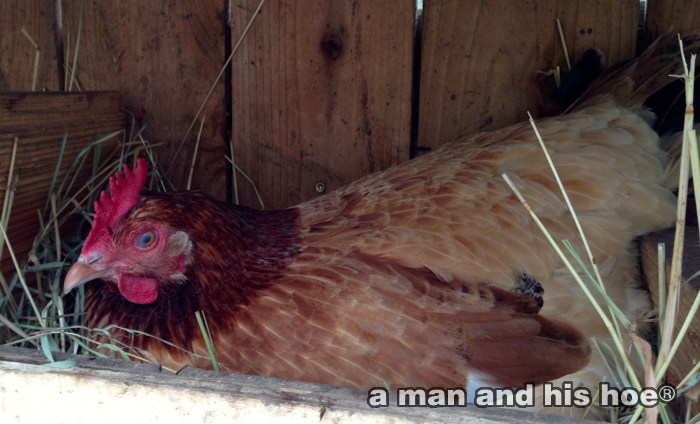

Spring Deepens – The Lovage Has Sprouted
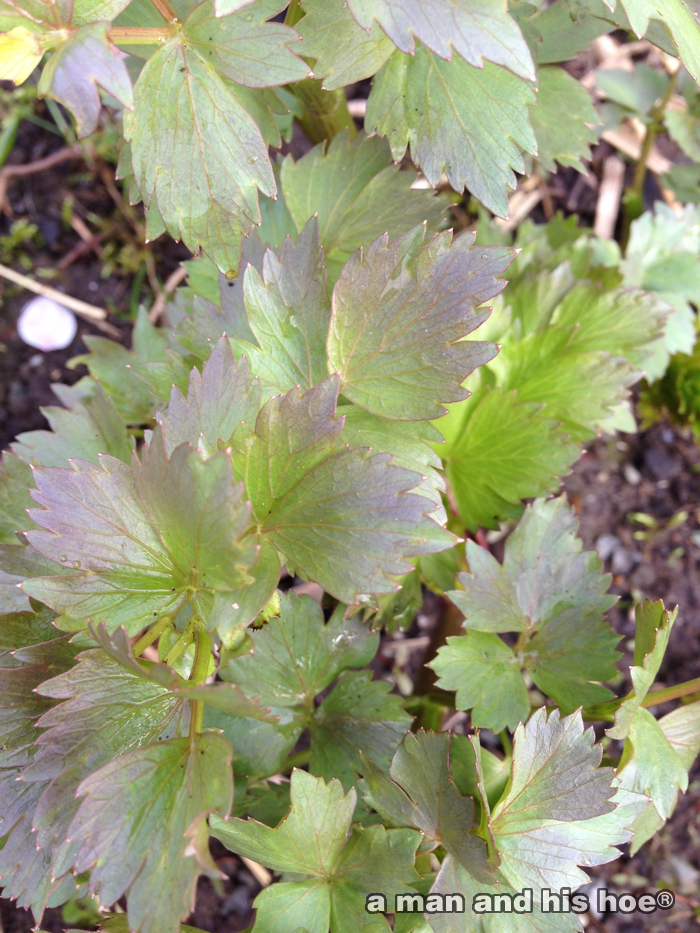
This morning I noticed that our lovage has sprouted. Potato soup isn’t potato soup without lovage. A few leaves of lovage brighten up any salad. Not only is the plant delicious, it has a celery like taste, with many medicinal uses, it is beautiful and grows easily. Since it is a perennial, it comes up every year so once you have it, you have it forever.
This is one of those many, incredible vegetables that you never see in a supermarket. One of the downsides of our modern food distribution system is that it is based on handling huge volumes of products. The big box stores will only handle things that are produced on a vast scale, will travel great distances well, and keep on the shelves for a long time. This drastically limits the variety of produce they carry. This is why cities need to have hundreds of neighborhood food gardens, so that everyone can savor the full gamut of fruits and vegetables that nature provides. Imagine being within walking distance of a garden where you could stop, on your way home from work, to pick the vegetables and herbs you need for supper. So many vegetables taste best when eaten within an hour of being picked.
Hugh Fearnley-Whittingstall of The Guardian posted a number of lovage recipes here.
According to Wikipedia:
The leaves can be used in salads, or to make soup or season broths, and the roots can be eaten as a vegetable or grated for use in salads. Its flavor and smell is somewhat similar to celery. Lovage tea can be applied to wounds as an antiseptic, or drunk to stimulate digestion. The seeds can be used as a spice, similar to fennel seeds.
- Lovage on Wikipedia
- Lovage on Botanical.com
- Washington Post – Lovage: A big plant with an even bigger flavor

Beauty is Everywhere – Do Chickens See Beauty?
Beauty is everywhere. When the chickens make their rounds, do they see beauty? When they walk over fallen cherry petals, do they just see good things to eat, or do they think it’s pretty? When they walk by moss covered rocks, do they just check to see if there is something to eat on the moss, or do they pause and enjoy the lush green?
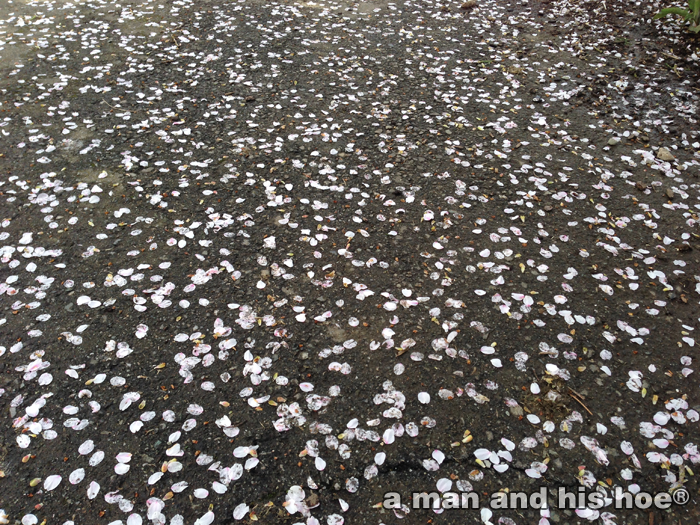
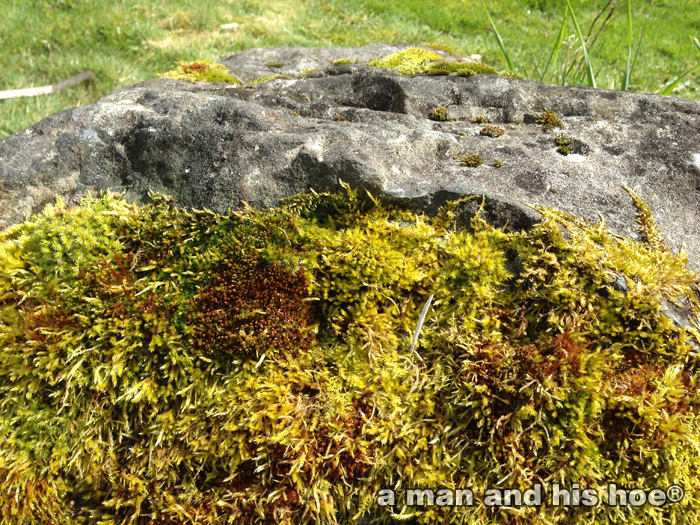
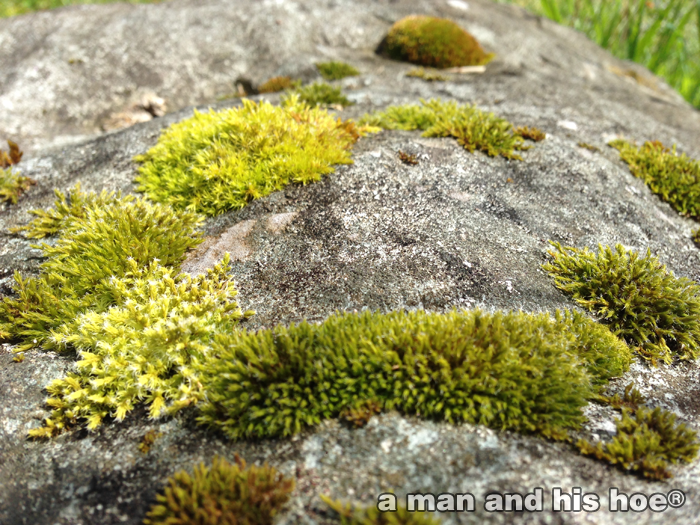
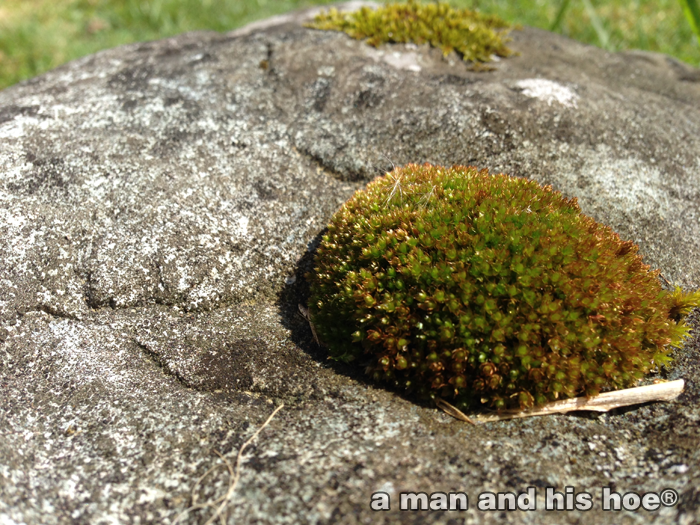
I’ll never forget the day I ran into Madeleine taking a walk in the woods. She was the first hen I had who hatched and raised a clutch. A day or two after she was done rearing her brood, she was strolling down a path through the woods.
I watched her for some time. She seemed to be more than just looking for good things to eat. She seemed to be taking a much needed rest from having spent twenty four hours a day for over a month rearing nine chicks. It was like she was out enjoying being alone for the first time in a long time.
That was back in 2010. Madeleine is no longer living. But I’ll never forget her. Watching her care for her chicks convinced me that every chick deserves a mother.

Living Green
Just so you realize that a man and his hoe® is about more than just mother raised chicken and eggs, here are some pictures of some crops which are growing now. What you see here are shallots, raspberries, plums in bloom, onion, garlic, and arugula. Though chickens do a thorough job clearing out pests, they can destroy vegetable beds in no time. Often, they aren’t going after the vegetables. They usually destroy vegetable beds by tearing them apart in their search for earthworms and bugs.
A terrific byproduct of vegetable and fruit production is mountains of compostable material. Every two to three months I start a new compost pile and keep adding to it until it is time to start another pile. Chickens are great compost workers, and every time I need to stir or break down and rebuild a compost pile, they swarm in to help. They can’t get enough of all the good worms and bugs they find in the pile. Their litter helps get the compost pile cooking, and when the pile is done, they do a great job breaking it down and spreading it over new vegetable beds.
The great thing about growing crops and raising chickens is that you see up close what nature is. It is always changing and constantly recycling everything. There is no waste in nature. Everything is something’s or somebody’s food. And while this frenetic activity is going on, there is so much beauty to see, it takes your breath away.
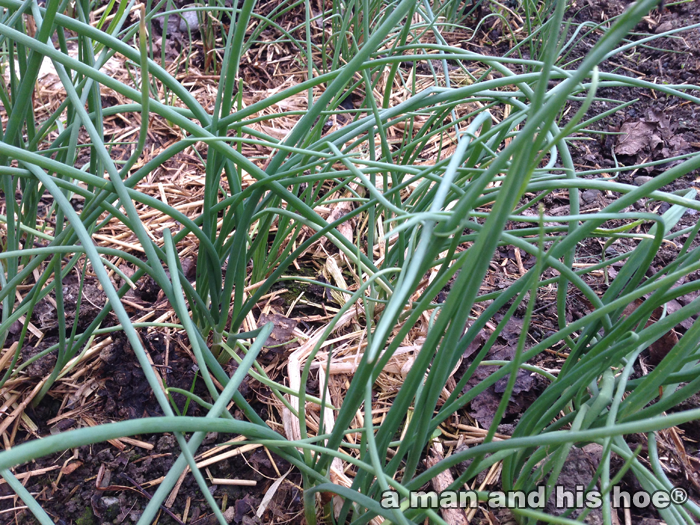
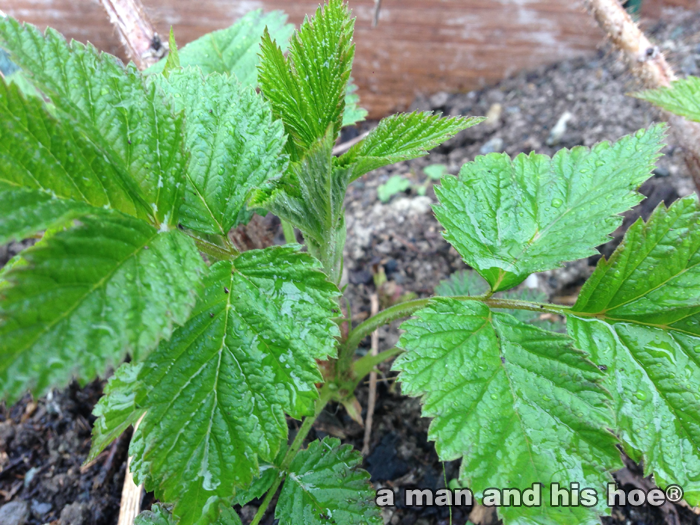

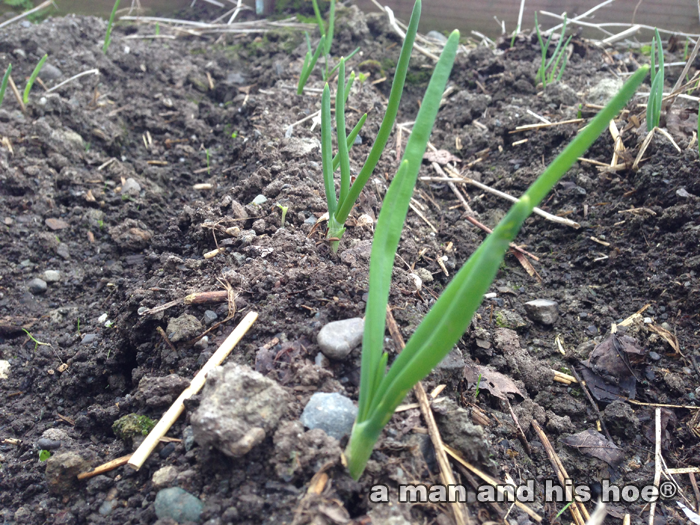
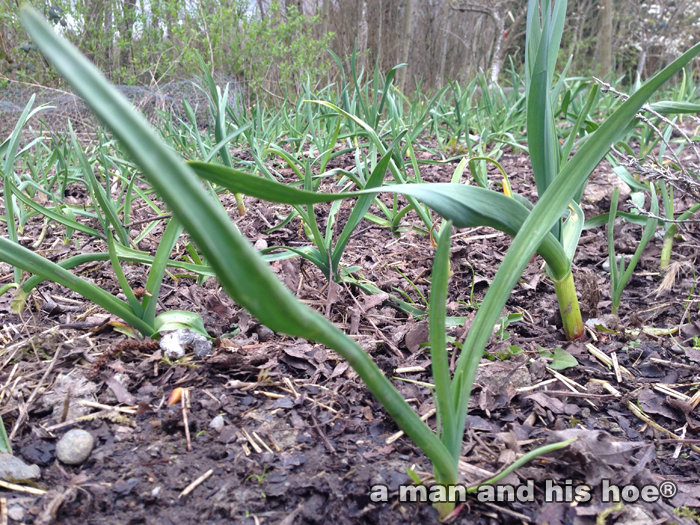

Billy and the Plum Tree
Billy, the rooster who along with Madeleine, started my education into mother-raised chicken. He’s five years old and no longer the top rooster. But he’s settled into a quiet spot in the backyard where he spends much of the day. Numerous hens come and visit him so he’s a long way from not enjoying life. This week he’s devouring the plumb blossoms as they drift off the plum tree. Not a bad life for an old rooster.
